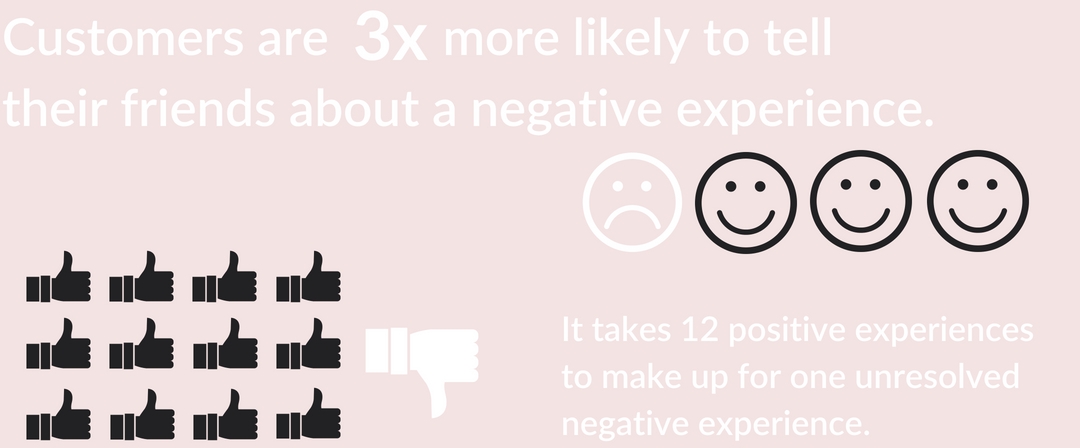How To Keep Clients When They’re Dissatisfied
As a lash artist, your job is to make your clients look beautiful and feel good about themselves by using the best quality lash extension products.
But even the best of us can make mistakes. Especially with lash extensions being such a detailed and at times unpredictable service, chances of an off day run higher. For example, if it rains the night before or during your service, the humidity in the air may be going up and down, making it harder to control your adhesive and putting your client's lash retention at risk. Another example could be that you are sharing space with another artist and you come into work to find necessary items not restocked, or the workstation is a mess. This can frazzle your normal zen approach to lashing and cause your mind to be distracted, leaving your technique to suffer.

We know that there will always be days when you’re not feeling well and can’t maintain the usual service standards.
But what can you do in such situations?
How can you keep clients from going to your competitors even when you fail to meet their expectations?
Here are a few ways to get a second chance with dissatisfied customers.
1. Understand the Cost of a Dissatisfied Customer
In the age of social media and smartphones, even one dissatisfied customer can be very costly to your business. According to research, customers are 3X more likely to tell others about a negative experience as compared to a positive one and it takes 12 positive experiences to make up for one bad experience.

According to this interview in
“This is a general tendency for everyone,” said Clifford Nass, a professor of communication at Stanford University. “Some people do have a more positive outlook, but almost everyone remembers negative things more strongly and in more detail."
You can probably relate to this. If you look back at your last pleasant interaction at a restaurant, can you remember what you ate, what the servers name was, or the decor? Probably not. But if you went to the same restaurant and were sat at a dirty table, your server had stains all over their shirt, and your burger was served raw when you asked for well done, you would certainly remember every detail right?
When something negative happens during your service experience, your brain is triggered to be extra aware of your surroundings and to be on the lookout for anything else that may go wrong. This is a survival instinct according to the same NY Times article. Knowing this tendency is helpful to you as a lash artist because you can be prepared for negative customer feedback.
Even if you think a customer’s anger isn’t justified, you still need to diffuse the situation and find a solution because it’s important for your brand image.
2. Think From Your Client’s Perspective

When customers are angry, they want someone to listen to them and understand their problem. The last thing you’d want to do is to get into an argument with a dissatisfied customer. Don’t try to prove them wrong. You might win the argument, but you'll definitely lose the customer.
Instead, think from their perspective. If you were an unhappy customer, would you want to be argued with, even if a part of you knew you might be acting over critically?
They hired you with certain expectations. Listen to them carefully without any interruptions. Stay calm and try to understand their concern. Be a reassuring voice instead of pointing fingers or being defensive.
3. Make the Customer Feel Heard

If you got a bad review on Yelp or Google, there are things you can do. You can post a public response on either platform. First, though, you should reach out to the client by phone. Try to get them on the phone to talk through the review and what could have gone better. One of the best ways to demonstrate your concern for a customer’s problem is to listen to them carefully and then repeat it back to them to confirm your understanding. It’s even better if you can write it down on an official complaint form and make it a part of your record.
Tell them that you understand their concern, are deeply sorry for the inconvenience and will do everything to make things right.
Doing so will not only make the customer feel heard and calm them down but also allow you to have a clear understanding of the actual problem.
4. Offer Alternatives To Create a Win-Win Scenario
Once you understand the problem, try to come up with a solution that not only satisfies the customer but also doesn’t negatively impact your business.
Discuss different options with the customer, seek feedback and turn it into a consultative process by involving the customer with you in finding the right solution. It might be a discount on their next service, a free touch-up on their lashes, or a free retail product with their next appointment.
If the customer doesn’t accept any of your proposals, ask them what they’d like you to do. Try to end the conversation on a positive note and make the customer feel like the real winner. If the client is happy when all is said and done, explain to them how much their review matters and ask if they would be willing to update their review to make it more positive.
Your relationship with a dissatisfied customer doesn’t end with a refund or an alternate solution. To turn them into lifelong clients, follow up with them to ensure that they’re happy with the solution and what you had to offer. Know that you won't be able to make everyone happy and that's ok. Do what you can by using these tips and once you have finished the process post a public response with the things that you tried and what you offered to make things right. Even if the client doesn't update or remove their review, at least those looking at the review will see how you tried to make a difference in their experience.

Sydney Farrell
Content Manager | Extrovert | Amateur Chef | Weapon of choice: Glitter


Leave a comment